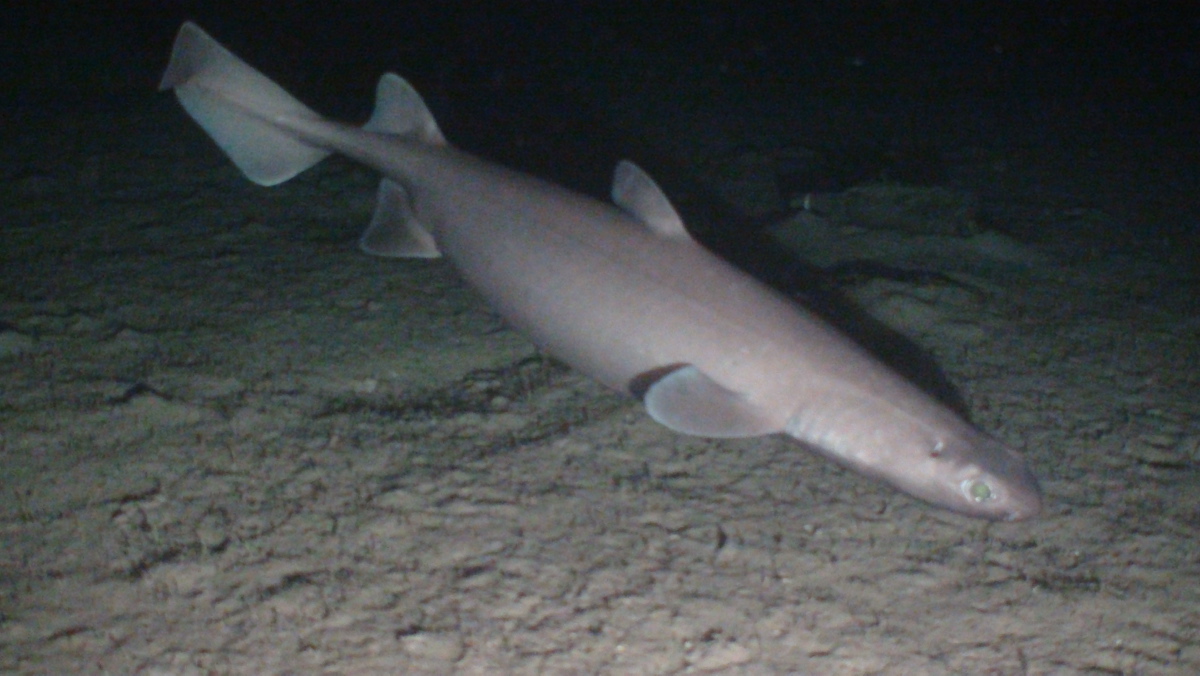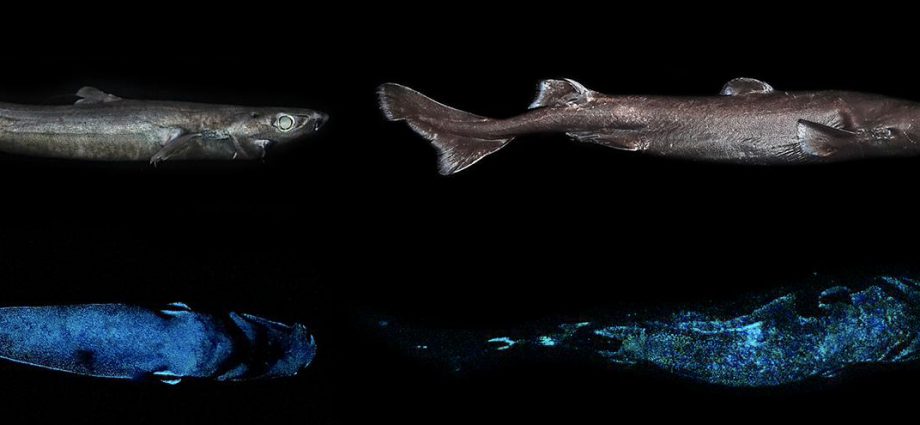WELLINGTON (New Zealand)- Researchers of the from the Université Catholique de Louvain in Belgium and the National Institute of Water and Atmospheric Research (NIWA) in New Zealand have discovered that three deep-sea species glow in the dark. Including the Kitefin Shark, which is now officially known as the argest-known luminous vertebrate.
Glow in the dark is also called bioluminescence and consist of the production of visible light through a chemical reaction by living organisms. It is a widespread phenomenon among marine life, especially in the dark depths of the oceans. Never before it has been documented and analysed in the Kitefin Shark, the Blackbelly Lanternshark, and the Southern Lanternshark.
Twilight zone
All three species live in what is known as the mesopelagic or “twilight” zone of the ocean, between 200-1000 metres deep, beyond which sunlight does not penetrate. Seen from below, the sharks appear backlit against the bright surface of the water, leaving them exposed to potential predators without any place to hide.
In the case of the kitefish shark, which has few or no predators, it is possible that the slow-moving species uses its natural glow to illuminate the ocean floor while it searches for food, or to disguise itself in approaching its prey.
The sharks were collected during a fish survey of the Chatham Rise off the east coast of New Zealand in January 2020. The Kitefin Shark, which can grow to 180cm, was called a “giant luminous shark” by the scientists.
Glowing sharks
This first experimental study of three luminous shark species from New Zealand provides an insight into the diversity of shark bioluminescence, according. “It also highlights the need for more research to help understand these unusual deep-sea inhabitants: the glowing sharks.”

Read the full research in the Frontiers in Marine Science journal.

